Best AV Receivers of 2024 The Master Switch See our guide to the best AV receivers of 2024 with reviews of top AV receiver models from Denon Marantz Onkyo Yamaha Sony and more.
See our guide to the best AV receivers of 2024, with reviews of top AV receiver models from Denon, Marantz, Onkyo, Yamaha, Sony and more.
- Best Overall AV Receiver: Denon AVR-S760H
- Best Budget AV Receiver: Sony STR-DH590
- Best High-End AV Receiver for Dolby Atmos: Denon AVR-X3700H
- Best Receiver for Wireless Surround: Yamaha RX-V4A
- Best AV Receiver for Audiophiles: NAD T 778
- A Great AV Receiver for Music: Denon AVR-S970H
- Best AV Receiver With Sonos: Integra DRX-3.3
Best Overall AV Receiver
1. Denon AVR-S760H ($445)
Channels: 7.2Dolby Atmos: YesDTS:X: YesWattage Per Channel: 75/8Ω, Two-Channels DrivenWhat We Like: Powerful, muscular sound matched with terrific features.What We Don’t: There’s no Chromecast and the HEOS app can be annoying.
In our opinion, anybody looking to buy the absolute best overall AV receiver for the money should buy a Denon—and in particular, the AVR-S760H. This line represents some of the finest receivers we’ve ever tested, impressing us with hard-hitting, muscular sound. The S760H has a wealth of useful features, including Dolby Atmos and DTS:X surround sound, Bluetooth, and Spotify Connect for music listening. It’s been out for a little while now, but we think it has yet to be bettered by any other AV receiver model in its price range. There isn’t another product on this list that combines this range of features with this level of sound quality, and all for under $500. We’d much rather steer you toward a slightly older model than hit you with a pricey new receiver that does more or less the same thing.
One feature that we would like to see added to the Denon AVR-S760H is Chromecast. This is a surprising omission for a receiver released in 2022—this kind of thing really should have been added in an update by now. It’s made even more annoying when you consider that HEOS, Denon’s own streaming app, is a bit clunky and frustrating to use. That said, you can easily operate the AVR-S760H without it. We much prefer this receiver to models like the Yamaha RX-V4A below, and even Denon’s other offerings. It genuinely is one of the best models you can buy.See the Denon AVR-S760H
Best Budget AV Receiver
2. Sony STR-DH590 ($263)
Channels: 5.1Dolby Atmos: NoDTS:X: NoWattage Per Channel: 145/6Ω, Two-Channels DrivenWhat We Like: Offers a lot for the price, with good sound and features.What We Don’t: Not really suited to floorstanding speakers.
If you are a beginner in the world of home theater and surround sound, the Sony STR-DH590 is the receiver to go for. It gives you all the features you’ll need to get started with a basic surround speaker setup, and draws its wealth of features from its bigger brother, the STR-DN1080. You get five speaker channels, allowing you to use speakers at the side or rear, and there’s full 4K passthrough so you can get the very best out of your picture. The sound quality is solid, too. While other receivers like the Denon AVR-S540BT have a little more sonic weight to them, the STR-DH590 delivers great precision and detail.
One of the things to bear in mind with the Sony STR-DH590 is that it doesn’t play well with bigger floorstanding or tower speakers. It simply doesn’t have the finesse or power to drive them effectively, meaning you’ll get subpar sound. If you go for this receiver, we recommend smaller satellite or bookshelf speakers. But really, that’s one of the few downsides. If you’re on a budget, or looking to dip your toe into surround sound, the STR-DH590 is one of the easiest ways to start.See the Sony STR-DH590
Best High-End AV Receiver for Dolby Atmos
3. Denon AVR-X3800H ($1,649)
Channels: 11.4Dolby Atmos: YesDTS:X: YesWattage Per Channel: 105/8Ω, Two-Channels DrivenWhat We Like: After buying this, you won’t need to upgrade your receiver for a long time.What We Don’t: Design could be sleeker.
One of the annoying things about new AV receivers is that they often increase the price while adding very little. That’s not the case with the Denon AVR-X3800H, an upgrade on the 3700H that really packs in the new features. There’s a new surround processor, making this receiver ideal for Dolby Atmos, and you can now assign individual channels as pre outs. That means you can add as many power amps as you like, creating your dream system. There’s eARC, 8K upscaling on all six HDMI inputs, and…look, we highly doubt there is any future tech development in the next five or six years that Denon hasn’t catered for. This isn’t just the top choice for any Dolby Atmos enthusiast; it’s the ultimate future-proof receiver. It helps that it sounds terrific, too: weighty and punchy, with real bite.
One of the things that hasn’t been upgraded with the Denon AVR-X3800H is the design. This looks roughly the same as every other Denon receiver before it, and while Denon clearly believe that if it isn’t broke, they shouldn’t fix it, it’s still a boring build that could use a refresh. That aside, there’s no question that this receiver is a stellar choice for hardcore surround sound nerds, and those building a bespoke home cinema. Worth noting: if the price is too high, the AVR-X2800H costs less than a grand, but has significantly reduced specs. If that’s where you’re aiming, our top-ranked Denon AVR-S960H is a better option, with more sonic weight.See the Denon AVR-X3800H
Best AV Receiver for Wireless Surround Speakers
3. Yamaha RX-V4A ($345)
Channels: 5.2Dolby Atmos: NoDTS:X: NoWattage Per Channel: 80/6Ω, Two-Channels DrivenWhat We Like: Flexible and versatile, and we love the new look.What We Don’t: Sadly the build quality doesn’t match the great design.
Wireless home theater can be hit and miss. Sonos speakers won’t work with most AV receivers, and Denon’s HEOS system can be glitchy and irritating. Yamaha, however, gets it. Their MusicCast system works well, and if you want wireless surround audio, we recommend going for the new RX-V4A receiver, which connects flawlessly to the company’s MusicCast 20, 50, and Sub 100 speakers. It doesn’t have Dolby Atmos or DTS:X, but we don’t consider that a downside: wireless speakers can’t use those anyway. No, this is a receiver built specifically to ditch the cables, and it works superbly well. It’s a much better option for wireless audio than the top-ranked Denon AVR-S960H, for example.
We adore the sleek new look that Yamaha have introduced with their new receivers. The RX-V4A has a broad front panel that looks chic and sleek—but, the build quality can’t match it, and despite the great design, the materials feel cheap and plasticky. And while the sound is perfectly passable, it’s not quite as full or as punchy as other models, like the aforementioned Denon. Note that the Yamaha RX-V4A can also use WPT123 speakers perfectly well—it’s just not the best option for them. And if you did want to stick to Sonos, check out the Integra DRX-3.3 receiver below. You’ll pay significantly more, but it plays nicely with Sonos speakers. This Yamaha does not.See the Yamaha RX-V4A
Best AV Receiver for True Audiophiles
5. NAD T 778 ($3,499)
Channels: 9.2Dolby Atmos: YesDTS:X: NoWattage Per Channel: 110/8Ω, Two-Channels DrivenWhat We Like: Finally someone redesigns the AV receiver.What We Don’t: No DTS-X limits its functionality.
One thing you may have noticed with our list, even if you’re only moderately alert, is that virtually all the receivers look the same. Same design, same control schemes, identikit names. Don’t blame us; blame the industry. Which is why the NAD T 778 is such a breath of fresh air. It’s the first receiver we’ve seen that actually looks cool, incorporating NAD’s excellent touchscreen technology and a vivid, bright display. This brand-new receiver sounds stupendous, with a stunning range of features, and is a highly competitive alternative to the likes of the Arcam AVR20. Of all the four-figure monsters here, the NAD T 778 is the most interesting and exciting. It’s a few years old now, and is due an upgrade soon, but it’s still going strong. We think that even long after its release, it’s the best option for those willing to spend big on an AV receiver.
The high price may make people pause, however. The T 778 is one of the most expensive receivers on this list, and given the touchscreen tech and the stunning range of features, that’s hardly surprising. However, it’s out of reach for most people, which makes it hard to recommend that everybody buy it. There are also some puzzling omissions, like the lack of DTS:X – all you get is DTS Master Audio.See the NAD T 778
A Great AV Receiver for Music
6. Denon AVR-S970H ($444)
Channels: 7.2Dolby Atmos: YesDTS:X: YesWattage Per Channel: 90/8Ω, Two-Channels DrivenWhat We Like: Significant price drop makes this incremental update worthwhile.What We Don’t: Lacks some features, and has an outdated interface.
Previously, we would have advised against the Denon AVR-S970H. It was an incremental update on the 960H, and cost more. But the price dropped to make it more affordable, so we think we can recommend it over its older brother. All in all, it’s an excellent receiver, with a huge range of features and warm, engaging sound quality, particularly for music. You can add wireless speakers via Denon’s HEOS functionality (although the less-expensive Yamaha RX-V4A is a better option for this) and there are clever features like Apple AirPlay 2 and smart assistants included.
However, features are where the Denon AVR-S970H struggles. As good a receiver as it is, it’s a real puzzle that it doesn’t have Google ChromeCast, which most other receivers above it in this list have. We also have to give it a black mark for the on-screen interface, which is clunky and outdated. While these issues mean that the Denon AVR-S970H isn’t the best AV receiver, it’s still very good overall and excellent for Spotify listening.See the Denon AVR-S970H
Best AV Receiver With Sonos
7. Integra DRX-3.3 ($999)
Channels: 9.2Dolby Atmos: YesDTS:X: YesWattage Per Channel: 90/8Ω, Two-Channels DrivenWhat We Like: Clean Sonos integration makes wireless speaker audio a breeze.What We Don’t: We think it’s overpriced right now.
Sonos speakers are hugely popular, and with good reason: when it comes to wireless audio, they are among the easiest and best-sounding options available. Their products are slowly becoming more and more integrated with AV receivers, and we think the Integra DRX-3.3 does the best job here. It easily allows you to link existing Sonos speakers to it, as well as play any audio through the Sonos Connect app. If you own speakers from the company, and you want to integrate them into a compelling home theater setup, then the DRX-3.3 is the best way to do it in our opinion. A full Sonos system does allow you to eliminate receivers entirely by relying on an Arc or Beam soundbar, but you don’t get the functionality and versatility that the Integra gives you.
The problem is, Sonos integration aside, the Integra DRX-3.3 doesn’t do anything particularly special. Other less expensive receivers, like the $649 Denon AVR-S960H, arguably offer better sound quality. And since we are talking about price, it must be said that the DRX-3.3 is quite expensive for what you get. It’s a great option for Sonos integration, but it definitely has its downsides.See the Integra DRX-3.3
Best of the Rest
8. Denon AVR-S540BT ($429)
Channels: 5.2Dolby Atmos: NoDTS:X: NoWattage Per Channel: 70/8Ω, Two-Channels DrivenWhat We Like: Good sound quality, room for two subwoofers.What We Don’t: Outdated design features, like spring clips for speaker wire.
We are always very careful about recommending receivers under $400, as they can be hit and miss. The Denon AVR-S540BT, fortunately, is the former. It may be parsimonious with features, especially when compared to models like the $278 Sony STR-DH590, our top budget pick. But it makes up for it with solid sound quality that has real punch and pizzazz. We also like the fact that it’s a 5.2 system, meaning it can handle twin subwoofers—a rarity at this price point. If you’re a bass head, the AVR-S540BT could be a great option.
The most glaring downsides, in our opinion, are the dated design and the lack of features. The Denon AVR-S540BT may offer good sound, but it uses spring clips for speaker wire attachment, as opposed to the more common and much friendlier binding posts. Banana plugs are not an option. That makes it fiddly and irritating to setup, although it’s forgivable at this price point. And compared to other budget receivers, here, the AVR-S540BT loses out big time. It offers only Dolby TrueHD and DTS HD Master surround sound, which are very limited options. We like it for pure sound quality, but it’s far from the best receiver here.See the Denon AVR-S540BT
9. Sony STR-AN1000 ($648)
Channels: 7.2Dolby Atmos: YesDTS:X: YesWattage Per Channel: 165W/8Ω, Two-Channels DrivenWhat We Like: Terrific sound and user interface.What We Don’t: Doesn’t quite compete with bigger models. Several other sites place the STR-AN1000 at the top of their AV receiver lists. We are not several other sites. While we think it’s solid – especially for the price range – it doesn’t quite get the edge over the Denon AVR-S760H. All the same, it’s got excellent sound quality, not to mention power: 165 watts, which is more than enough to power just about any speaker currently on the market. The sound is rich and bombastic, and while there are better receivers available, there are few that sound as good. Sony hasn’t refreshed this receiver in some time, and there’s no news on when that might happen…but it’s an old, reliable warhorse that still battles with the best.
We also love Sony’s interface, which continues from the one present on the old STR-DN1080, and is very easy to use. We appreciate the fact that it not only has Dolby Atmos and DTS:X functionality (not usually seen at this price range) but also DSD functionality. That means it can play ultra-high-resolution audio files; a nice touch, and not one you see often. Here’s to the…1100? 2000? What we wouldn’t give for some original receiver names…See the Sony STR-AN1000
10. Sony STR-DH790 ($378)
Channels: 7.2Dolby Atmos: YesDTS:X: YesWattage Per Channel: 145/6Ω, Two-Channels DrivenWhat We Like: Solid audio quality.What We Don’t: Spring clip speaker terminals? Is this a joke?
The Sony STR-DH790 is the bigger brother of the DH590, which is currently our top budget pick for receivers. Yes, you’ll pay a little more money, but you get significantly better sound quality, particularly with movie dialogue. You get a very good range of features, too: Dolby Atmos, DTS:X, and two more channels (plus an additional subwoofer output). If you’re looking for surround sound, but aren’t willing to spend $1,700 on a Denon AVR-X3800H, then this Sony will do just fine.
But boy, does the Sony STR-DH790 make some strange design choices. The speaker terminals, for example. The front left and front right are regular terminals that allow convenient banana plug connections, but all the others are basic spring clips that only accept bare speaker wire. That is stupendously annoying, and not something we’d expect when spending almost $500. This is a good receiver, but it’s not our first choice.See the Sony STR-DH790
11. Marantz NR1711 ($799)
Channels: 9.2Dolby Atmos: YesDTS:X: YesWattage Per Channel: 110/8Ω, Two-Channels DrivenWhat We Like: Offers a solid range of features, including HDMI 2.1 and Dolby Atmos.What We Don’t: We think it’s overpriced right now.
The Marantz NR1711 is the latest in the current trend of slimline receivers—a welcome trend, we might add. It’s a sleek, attractive receiver that really wows on features. There’s 8K compatibility (although there’s scant content right now that can take advantage of it), HDMI 2.1, and crucially, Variable Refresh Rate. That’s important for new consoles like the XBox Series X and PS5, making this receiver a great option if you plan on picking one of those up. It makes the Marantz NR1711 the best choice for those who want a full gaming surround system. That said, the big downside here is that the Marantz NR1711 is overpriced right now. $1,099 feels like a lot, especially when you take into account the sound quality, which is good rather than great. Marantz do love their incremental updates, so hopefully newer models will see this one drop in price. However, right now, it’s only worth considering if you’re a gamer and want to get the absolute best out of your XBox or PS5. Because outside of that particular use case, there are better and more affordable options available. Our top pick, the Denon AVR-S960H, does almost everything the Marantz does, only backwards and in heels.See the Marantz NR1711
12. Yamaha RX-A6A ($2,243)
Channels: 9.2Dolby Atmos: YesDTS:X: YesWattage Per Channel: 150/8Ω, Two-Channels DrivenWhat We Like: Clean, detailed sound quality.What We Don’t: Way too many features you won’t use—but will pay for.
The Yamaha RX-A6A—not to be confused with the far more affordable Yamaha RX-V4A, one of our top picks—is a fine high-end AV receiver. It’s Yamaha’s attempt to compete with the big Denon models, and mostly, it does well. The sound doesn’t have the warmth and punch of the Denon AVR-X3800H, but makes up for it with clear, almost clinical detail and pinpoint precision. The feature sets are comparable, meaning that this is the receiver to go for if you’re prepared to pay for super precise sound.
The problem is, the Yamaha RX-A6A actually offers too much. It includes the company’s Cinema DSP HD3 processing, which allows you to access twenty-four recreations of famous spaces. Fun, but mostly useless when you just want to watch a movie with good sound. Ditto for Surround: AI, which is supposed to level the sound naturally but mostly comes off as artificial. The RX-A6A sounds good, but does come off as Yamaha throwing stuff at the wall to see what sticks. And why should you have to pay a high price for that? Ultimately, there are better and less expensive options in the world of AV receivers, and ones that waste significantly less of your time.See the Yamaha RX-A6A
13. Onkyo TX-NR696 ($366)
Channels: 7.2Dolby Atmos: YesDTS:X: YesWattage Per Channel: 100/8Ω, Two-Channels DrivenWhat We Like: Great range of features for the price.What We Don’t: Sound quality isn’t super-exciting.
The Onkyo TX-NR696 is an ideal alternative to some of the pricier models above, especially if you don’t need the additional channels and power. For almost all setups, this is an excellent choice, boasting a great range of features for the price. These include the ability to add speakers in an additional zone, meaning this could easily power the audio in an entire house. You also get not one but two subwoofer outputs, meaning that the entire house will shake on its foundations.
Our biggest problem with the Onkyo is that the sound quality isn’t nearly as meaty as the Denon AVR-S-970H, which actually costs much less. It’s still very good – you certainly won’t feel shortchanged. But it doesn’t have the punch or excitement other receivers have, and if you really want to experience movies and streaming series in the best possible way, it’s worth going for the Denon. You also don’t get quite as many surround sound options - just Atmos, DTS:X, and DTS Neural:X. Otherwise, this is an excellent choice.See the Onkyo TX-NR696
14. Denon AVR-X4800H ($2,285)
Channels: 9.2Dolby Atmos: YesDTS:X: YesWattage Per Channel: 125/8Ω, Two-Channels DrivenWhat We Like: Unreal sound quality, virtually perfect design, enhanced power supplies.What We Don’t: Not ideal for smaller rooms.
At a time when home sound systems are getting smaller, smarter, and more compact, Denon decided to go in the opposite direction. They’ve created this truly stupendous receiver, with 9.4 channels. This is a step back from the AVR-X4700H’s unreal 13.2 channels, but more than enough for even a discerning audiophile.
At the time of writing, there’s simply nothing else quite like it. And if you can imagine a type of surround sound program or a receiver technology, it’s here. The feature set is just unbelievable. However, like the Arcam AVR20, this is overkill for most people. It’s something that should only be bought by those who can take full advantage of its speaker channel complement. Otherwise, you’re just wasting your time. If you have a big room and want to experience the joys of something like Auro-3D, then this is most definitely the receiver you should go for. It services a niche market, but it does this incredibly well. If you want the same Denon quality, but aren’t prepared to pay quite as much (and don’t need as many channels) try the AVR-X3800H. That’s one of the newer AV receivers from Denon, and is arguably more future-proof—and less over-the-top—than this high-end model.See the Denon AVR-X4800H
15. Yamaha RX-V6A ($600)
Channels: 7.2Dolby Atmos: YesDTS:X: YesWattage Per Channel: 100/8Ω, Two-Channels DrivenWhat We Like: Sleek design that is eye-catching and different.What We Don’t: Outside of looks, there’s little different here from less-expensive models.
Yamaha recently refreshed their entry-level line of receivers, of which the 7.2-channel RX-V6A is one. It has a completely redesigned front-end, which we think looks gorgeous. The sleek, black expanse and the two-tier layout is a breath of fresh air among the identikit black boxes on this list, and we truly hope the design makes it all the way up the Yamaha line.
Unfortunately, that’s where our recommendations end. Because for $600, we would have hoped that the RX-V6A would do something a little different, beyond the looks. Yes, you get 8K and HDR10+, but there’s just not enough content to take advantage of them right now. We can’t really recommend you buy this over, for example, the less-expensive Denon AVR-S750H ($499), which is a tried-and-tested machine with similar features. The RX-V6A should do better on this list if the price drops at any point.See the Yamaha RX-V6A
AV Receiver Comparison Table
As Dolby Atmos and DTS:X are the dominant surround sound software programs available, that’s what we’ve focused on when comparing AV receivers. If you want a full list of each receiver’s surround-sound programs, check out the table below for our explanation of lesser-known ones.
| Receiver |
Price |
Channels |
Dolby Atmos |
DTS:X |
Watt* |
Connectivity |
| Denon AVR-S760H |
$445 |
7.2 |
Yes |
Yes |
90/8Ω |
Bluetooth/Wi-Fi |
| Sony STR-DH590 |
$263 |
5.1 |
No |
No |
145/6Ω |
Bluetooth |
| Denon AVR-X3800H |
$1,649 |
11.4 |
Yes |
Yes |
105/8Ω |
Bluetooth/Wi-Fi |
| Yamaha RX-V4A |
$345 |
5.2 |
No |
No |
80/6Ω |
Bluetooth/Wi-Fi |
| NAD T 778 |
$3,499 |
9.2 |
Yes |
No |
90/8Ω |
Bluetooth/Wi-Fi |
| Denon AVR-S970H |
$444 |
7.2 |
Yes |
Yes |
75/8Ω |
Bluetooth/Wi-Fi |
| Integra DRX-3.3 |
$999 |
9.2 |
Yes |
Yes |
90/8Ω |
Bluetooth/Wi-Fi |
| Denon AVR-S540BT |
$429 |
5.2 |
No |
No |
70/8Ω |
Bluetooth/Wi-Fi |
| Sony STR-AN1000 |
$648 |
7.2 |
Yes |
Yes |
Unknown |
Bluetooth/Wi-Fi |
| Sony STR-DH790 |
$378 |
7.2 |
Yes |
Yes |
145/6Ω |
Bluetooth/Wi-Fi |
| Marantz NR1711 |
$799 |
9.2 |
Yes |
Yes |
110/8Ω |
Bluetooth/Wi-Fi |
| Yamaha RX-A6A |
$2,243 |
9.2 |
Yes |
Yes |
150/8Ω |
Bluetooth/Wi-Fi |
| Onkyo TX-NR696 |
$366 |
7.2 |
Yes |
Yes |
100/8Ω |
Bluetooth/Wi-Fi |
| Denon AVR-X4800H |
$2,185 |
9.2 |
Yes |
Yes |
125/8Ω |
Bluetooth/Wi-Fi |
| Yamaha RX-V6A |
$600 |
7.2 |
Yes |
Yes |
100/8Ω |
Bluetooth/Wi-Fi |
*All wattage ratings are for two channels driven, which is what manufacturers commonly list. If you’re running all channels, expect the wattage per channel to be a little lower!
AV Receiver Buying Advice
- What Does An AV Receiver Do?
- AV Receiver Channels Explained
- Dolby Atmos, DTS:X, and Other Common Surround Sound Software
- Room Size
- Wattage Explained
- HDMI Explained
- 4K Explained
- Bluetooth vs. Wi-Fi
- AV Receivers and Sonos
- Connecting Your AV Receiver
- Room Calibration Explained
- AV Receiver Placement Explained
- Smart Receivers: Amazon Alexa and Google Home
- Where Are All the New AV Receiver Models?
What Does An AV Receiver Do?
Got multiple speakers? Planning on a surround system? Then you need an AV receiver. We used a quarterback analogy earlier, but perhaps a better one is air-traffic control. A receiver takes all the incoming audio and video signals, and reroutes to them their correct locations on the fly, sending audio out to your speakers and video from your games console (for example) to your TV. If it’s a good receiver, it will sharpen and improve the signals before sending them on, using its converters and amplifiers to make things better.
A lot of the picks on this list don’t actually look like much. They are fairly dull, bland boxes with a bunch of controls on them, and a bewildering array of inputs and outputs around the back. But without this box, your home theater setup is going nowhere. There are a few key components inside each box. There’s a preamplifier and an amplifier, for handling audio signals, a set of video inputs to work out where to send the visuals, and a decoder to separate the two. In addition, there may be a separate surround sound decoder, which splices the audio into its different channels and makes sure they get to the correct speaker. And by the way, it’s only functional if you have speakers to plug into it, or if you’ve got a full home theater system where the central component needs an upgrade. Good hunting!
AV Receiver Channels Explained
You’ve probably noticed the numbers 5.1, 7.1, and 9.2 floating around this article. What’s up with that? Well, this number refers to the amount and type of speakers in the setup: the first (5, 7, 9, whatever) refers to the number of high end and mid range speakers, while the second one (the .1, sometimes .2) refers to the subwoofer, or low-end speaker. Simply put, the more quality speakers there are, the more rich and dynamic your sound is likely to be. At the same time, you’re likely to pay more the higher those numbers get.
5.1 and 7.1 are considered the standard - the basic number of channels which a given receiver might have. Any receiver above about $500 will almost always offer 7.2 channels, allowing for seven speakers and two subwoofers. Even cheaper models, like the Denon AVR-S750H, come with 7.2 speaker channels. A 5.1 system would include three front channels (a center speaker, designed to sit under your TV, and two bigger ones just off to the left and right), and two on either side of the listening position. A 7.1 would add two more, behind you. A 9.1 or 11.1 system is where you start adding height speakers - something only a few receivers can actually take, like the incredible Denon AVR-X8500H, which offers a massive thirteen channels. This kind of thing is usually undertaken when you have a large room, and don’t mind doing some DIY to mount your speakers! Worth noting: the subwoofer channels (the .1 or .2) will require their own power, meaning you’ll use a different connection to that from your speakers. We’ll go into this in more detail below. And some receivers, like the cheaper Denon above, also allow you to expand your channel quota by adding more amps into the mix.
Dolby Atmos, DTS:X, and Other Common Surround Sound Software
Simply put: surround sound aims to deliver multi-dimensional sounds that move around in the same way as objects would in real life, by adding height to our aural perception. Surround systems rely on multiple speakers positioned in front of, behind, to the side and, sometimes, above your listening position. What makes surround sound possible are codecs: software code converting digital ones and zeros into an audible sound. They take the sound being sent into your AV receiver, and tell it where to go and how to be reproduced. If you’re not into reading tech specs, you can think of an AV receiver as a phone, and a surround sound codec as an app on that phone.
There are many, many surround sound codecs. Some are pieces of legacy software, some have very specific applications, and some are just there because…we don’t know. Hardly anybody has ever used them. While we aren’t going to break down every single one (we’d be here all day, trust us) it’s worth touching on a few - we’ll tackle six of the most common ones. You might never need to know what DTS-ES 6.1 Discrete is - honestly, we have to look it up every time we come across it - but it’s definitely worth knowing what Dolby Atmos and DTS:X are.
Dolby Atmos
Dolby Atmos is, as far as we are concerned, the best surround sound available. Where Dolby Atmos differs from conventional surround set-ups is by necessitating one, two or more extra pairs of ceiling speakers. Such elevated “reflecting” speakers will be positioned above your existing floor-level surround speakers, allowing for sounds to move between top and bottom. If starting from scratch, there are many Dolby Atmos enabled packages available to purchase, ready-in-a-box, including everything you need: AV receiver, amplification, and speakers. If you’re upgrading an already existing home surround system, you would need a Dolby Atmos-compatible AV Receiver. The biggest investment, though, would be for the additional elevated speakers - even for a minimal Dolby Atmos setup, you would need at least two ceiling speakers on top of a regular surround set, if not four.
Now you’re probably thinking: really? Drilling holes in my ceiling? Fortunately, the guys who make Dolby are wicked smart, and they’ve come up with an alternative solution. Instead of installing speakers in or on the ceiling, you can add speakers on top of your existing towers, with drivers projecting upwards. Atmos-enabled speakers can come with such drivers already built-in, and you can buy Atmos-modules that will work with your existing speakers. Worth noting: These additional up-firing speakers have their own speaker terminals to make them into separate, dedicated channels. This of course increases the number of amp speaker outputs needed - you might have to invest in additional amplification if you’ve already used up all of your amp’s available speaker connections. If you’re looking for a good pair of up-firing Atmos speakers, we recommend the Klipsch RP-500SA (full review here).
Dolby Atmos have their own way of naming their height-elevated setups, because surround sound systems weren’t confusing enough already. A 5.1.2 Atmos set-up would be like a traditional 5.1 surround system (in other words, five speakers and a subwoofer) but with an added pair of ceiling speakers (or Atmos modules): the ‘2’ in 5.1.2. Similarly, a 7.1.4 Atmos set will be like a 7.1 conventional surround setup with two extra pairs of ceiling speakers or Atmos modules (hence the 4 in 7.1.4).
DTS:X
DTS:X is the easiest one out of the lot to integrate within an already existing 5.1 or 7.1 surround sound setup, and as such it’s perfect for beginners. If you’re just getting started in surround sound, and you already own some speakers or plan on getting a basic setup, this is the one to go for. DTS:X’s approach to improving the listener’s experience is by “freeing the audio content from specific speaker channels” and is purely software based - there are no physical requirements for the number of speakers or their locations when setting up the system. It’ll work with any conventional speaker setups, up to 32 speakers.
With a DTS:X-enabled receiver connected, the rest of the setup is straightforward, really - the auto-calibration system optimizes all dialogue and sound effects feeds for you. The system’s menu also allows user-definable level adjustment, and can even boost hard-to-hear dialogue above the other sounds. Plus, older format movie and game soundtracks and even stereo music files can all be played through DTS:X - the conversion (from non-DTS:X sources) uplifts the content with an added spatial audio realism. For best results, it is recommended that you play content (Blu-ray discs or streaming Digital Media) optimized for DTS:X.
Auro-3D
Auro-3D is kind of a dark horse here. Dolby has a huge market share, and DTS:X is gaining fans fast, but Auro-3D’s technological requirements have seen it struggle, despite the fact that it’s pretty incredible. It requires two extra height levels added to the conventional surround experience: wall mounted height speakers installed on the sides, as well as a single main ceiling speaker- the awesomely-named Voice Of God speaker. Found in 9.1, 11.1 and 13.1 configurations, Auro-3D is surprisingly flexible. For example, if you are already using a 5.1 you can start your upgrade to an Auro 9.1 setup by adding four wall speakers - two above your two main speakers, and two above your two surrounds. If upgrading a 7.1 surround set to an Auro 3D layout you’d need an additional speaker above each surround and center speaker plus the added single ceiling channel.
We need to point out that an Auro-3D installation (or an upgrade from a regular surround system) can be a bit tricky due to the very specific positions, heights and angles of the additional Auro-3D overhead layers and wall speakers. This plays a major role in achieving the best possible audio quality. And unless you’re rich enough to have two home theater rooms, you aren’t going to be combining an Atmos system with an Auro-3D one. Similarly, Auro-3D won’t be happy with multiple ceiling speakers or up-firing drivers. If all that sounds splendid, then take a look at a receiver like the Denon AVR-X8500H which will allow you to upgrade to Auro-3D functionality via a firmware update.
Dolby True HD
Dolby TrueHD is the surround sound program used when your receiver isn’t quite cool enough to have Dolby Atmos. If your source is Atmos-capable – like, for example, a Blu-ray disc – but your receiver isn’t, the mix will be output as Dolby TrueHD. It’s an eight channel mix, which is still good, but not nearly as good as Atmos. It’s in direct competition with DTS-HD Master Audio. As you can imagine, this does much the same thing, but for sources decoded with the DTS:X format. Essentially, if you see either of these, it means that your receiver will still be able to take a Dolby Atmos or DTS:X mix and do something with it, even if it is incapable of those high-end surround sound programs.
DTS Neural:X
DTS Neural:X is a little bit trickier. Let’s say you have a source that only offers 2.1, 5.1, or 7.1 audio – in other words, audio that has been mixed for speakers at ear-level. Let us also say that you have a system with height speakers. That’s when DTS Neural:X would kick in, extrapolating height information from the mix, and playing it through those speakers. It’s not nearly as efficient as DTS:X, or as common, but it’s definitely useful in certain circumstances.
Dolby Digital Plus
Finally, let’s talk about Dolby Digital Plus. This is what you’ll be using if your system doesn’t have height speakers, but you still wish to use a Dolby audio mix. It’s not always a good idea to do this, especially when DTS:X it’s so good, but some receivers don’t have that, and so Dolby Digital Plus is worth knowing about. Put simply, it’s the standard non-Atmos Dolby software, and will give you surround sound without the height elements.
Room Size
One of the most common questions we get via email is what we mean when we refer to big, medium, and small rooms. We’ll admit: in the past, we haven’t always been clear about what this means. Part of this is because it’s actually quite hard to define – after all, how long is a piece of string? And despite having standards for just about every aspect of a piece of equipment imaginable, the home theater industry has yet to quantify room size. Given how important it is to take into account the size of your room when choosing an AV receiver, that’s probably not a good thing. So let’s settle this once and for all. Bear in mind that this is our take on it, and should be used more as a guideline than anything else.
A small home theater room should be considered anything with floorspace up to 130 square feet, whereas a medium room is up to 250 square feet, and a large room is anything above 250 square feet. We got those figures by chatting to our contacts at home theater companies. While none of them had a definitive answer, it was easy to get an average from their responses. You’ll notice that we’ve gone for square feet and floor space, rather than cubic feet and total room volume. While the volume of your room does have an impact on the sound, we think that, as long as your ceilings are at least eight feet high, you’ll be fine. You don’t want to go above 12 feet, generally speaking. It’s also worth noting that a home theater room should, ideally, be rectangular with the system projecting out from one of the short ends. We appreciate this isn’t always achievable, especially if you live in a small apartment, but ultimately, you’ve got to work with what you have.
You could argue that our approach is unscientific, but we believe these guidelines will hold true for the majority of people. For example, it’s pretty clear that our the Yamaha RX-A6A will be best suited for rooms above 250 square feet, thanks to its large power output. Any space smaller than that simply won’t get the best from your receiver. And given that the SR6014 costs $1,499 at the time of writing, you really want to get the best out of it.
Wattage Explained
This is the amount of power that the amp will push through to your speakers, and it can be as low as 30 watts (W) and as high as 500 watts. You’ll need to make sure your speakers can actually take this level of power, and again, there’s no point paying for power that is going to be overkill in the room (or which isn’t going to fill it up enough of it). You need to look at the wattage, which will give you an idea of how powerful your sound is going to be. We spent some time thinking about which stat to list here, and in the end, you’ll see that for most of our amps, we list wattage for two channels driven - two channels being the minimum (we think) that a receiver takes.
The first thing you might be wondering is: if a receiver is 7.2, then why are they being rated for two channels of sound? That, my friend, is because the two channel ratings look better than the seven channel ones, which are considerably lower. However, almost all receivers will be able to deliver enough power, so don’t stress about it too much. It’s more important to match speakers well, and you can do that by looking at output specs. Here’s an example of a typical manufacturer stat: Rated Output Power (20Hz-20kHz, 2ch driven): 105 W (8 ohms, 0.08% THD). That’s for the Denon AVR-X3800H, and what it means is that when two channels are receiving power with eight ohms of electrical resistance, between the ranges of 20Hz and 20kHz, you’ll be getting seventy-five watts of power with around 0.08% of distortion. And if that was gobbledegook, the only thing you need to pay attention to is the bit that says ‘seventy-five watts of power’. Find a speaker that can take that particular wattage at eight ohms, and you’re good to go. We explain it in a lot more detail here - don’t worry, it’s easy!
HDMI Explained
There are a huge number of connections on the back of any given receiver unit, both analog and digital, and we could spend quite a while going into great detail of which ones you’ll need. By far the most important ones are the HDMI inputs. You’ll want at least a few of these, as it’s the most-common and most-utilized type of port.
When we say HDMI I/O, we mean HDMI Inputs/Outputs. Usually, there are more of the former than the latter, and depending on how many HDMI-capable gadgets you have, this detail could be super important. But do you actually need all seven HDMI ports? For most of us, three or four will be more than enough. So why are you going for a unit that has more than double what you need? You think those things come for free? No way. You pay for extra ports, so think carefully about how many pieces of equipment you’re going to be using before you shell out your hard-earned cash. But on the other hand, these pieces of tech last for quite a while, and you will probably own yours for years. Over those years, you’ll certainly collect new electronics, new gizmos, new devices…all of which will need a discrete HDMI port. Really, what you’re going for here is a balance: the number of ports you’ll use now, plus one or two reserved for the future.
It’s an exciting time for HDMI at the moment - as much as you can ascribe excitement to a cable connection. HDMI 2.1 is slowly coming into operation. This is a very good thing, as it allows the transmission of ultra high quality video, including resolutions up to 10K. It’s especially important if you’re a gamer, as HDMI 2.1 is capable of transmitting 120 frames per second, meaning you get silky smooth graphics. The best part is that the physical connectors are exactly the same – all that’s changed is the internals on the cable. At the moment, there are very few receivers and sources that actually transmit HDMI 2.1 signals, which means it will be a while before the upgrade makes a real impression. However, there’s no question that it’s the direction we’re headed in. Manufacturers like Yamaha are throwing everything they have into releasing HDMI 2.1 receivers.
4K Explained
4K, if you don’t already know, is a standard of content with ridiculous visual fidelity and color sharpness. It sounds tricky, but all this number describes is a picture size: 3,840 by 2,160 pixels, to be precise. It means that, no matter how big your actual TV, there will be 3,840 by 2,160 pixels packed onto it, making for a clearer picture. 4K is what a lot of receiver makers set their reputations by these days, and it’s the thing you’ll see featured most prominently. But several other receivers, like the Denon AVR-S750H, offer support for different video standards. It’s probably a bit much for our purposes to go into here, but we do offer an explanation of the different types of video in our roundup of the best Blu-ray players.
Even though there are plenty of 4K-ready TVs - so many bits of AV gear exist these days that you might fool yourself into thinking it’s something you need to have - the truth is that 4K is not yet a necessity. The main issue is that not enough content is produced in 4K yet, meaning most of what you’ll see has been ‘upscaled’ and translated to a 4K setting without actually being 4K. Sometimes it works, sometimes it doesn’t. The good news is that all the picks on our list are 4K-ready. Even if you couldn’t care less, you’re getting it anyway.
You’ll notice that we discuss only 4K here and not 8K. 8K content is, as you can imagine, significantly more visually detailed than 4K, at 8,192 x 4,320 pixels. But while manufacturers might be trumpeting it as the next big thing, the reality is that it has yet to make serious inroads into the world of home theater. There is almost no 8K content available yet, and until the widespread implementation of things like HDMI 2.1, that’s unlikely to change. For now, you shouldn’t buy a receiver based on whether or not it can handle 8K content, as you’re unlikely to find many movies or seri es you can watch at that resolution.
Bluetooth vs. Wi-Fi
Something new to many AV receivers in the last few years is the advent of Bluetooth and Wi-Fi. Long may it continue! Bluetooth streaming allows you to send audio from your phone or tablet out to your receiver, to be played by your surround speakers. It is easy and convenient, but even at higher encoding levels (like aptX, or Bluetooth 4.1, which allow more data to be sent faster) it isn’t a patch on WPT123 sound, which is always going to be better.
Wi-Fi, on the other hand, is giving speaker wire a run for its money. Connecting a receiver to your home Wi-Fi network means you can play music or video from anything else connected to it, like your PC. It’s also less prone to dropouts than Bluetooth, and as we mentioned, it sounds better. The downside? It adds another device onto your home network, which we’re betting is probably already crawling with devices. One nifty Wi-Fi trick: some manufacturers, like Denon, have made their receivers compatible with their wireless multiroom speakers. That means you can set up complex wireless systems that allow you complete control of your music.
AV Receivers and Sonos
If you use any Sonos wireless speakers, you already are aware of just how simple they are to setup and use. For the most part, Sonos has kept this technology to themselves, which meant that those with traditional home theater systems have had to rely on inferior connectivity software. Fortunately, that’s changing. Sonos recently unveiled a collaboration with Onkyo and Pioneer that will allow their outstanding tech to work with certain AV receivers.
What does that mean in practice? You’ll be able to control receiver volume by using the brilliant Sonos app, and you can also attach up to three Sonos Port devices to your receiver. That means you can stream any receiver audio directly to other Sonos speakers and subwoofers, which essentially allows you to build a full home theater system that incorporates wireless Sonos audio.
That’s a massive leap forward, and it could make designing a surround sound setup much easier. Right now, however, only a few receiver models have this functionality, although you can expect many more to include it in the coming months. Of the models that use Sonos, we think the $999 Integra DRX-3.3 is the best one currently available, so check that out if you’d like to experience the simplicity of the Sonos ecosystem.
Connecting Your AV Receiver
We actually have a full guide to this, explaining every single connection on that crazy-complicated rear of your receiver, and what to do with it. But here’s a very short version, if all you need is a quick reference. It covers one of the more common setups.
- Connect your Blu-ray player or console to one of your receiver’s HDMI In ports, using an HDMI cable.
- Using speaker wire of at least16-gauge, connect your speakers to their individual channels. The easiest way to do this is connecting a banana clip to the end of each speaker wire. You do this by stripping each wire, and threading the metal inside through the hole in the banana clip. Then screw the cap back on, and plug the banana clips into the relevant channel.
- Each speaker has a red (+) connection, and a black (-) connection. Black to black, red to red. Always. A sharpie to color in the right split on the wire may be helpful.
- Connect your subwoofer to the Pre Out port, using a standard RCA cable.
- Connect your TV to the receiver’s HDMI Out port, using a standard HDMI cable.
- Plug in the receiver and subwoofer. Yes, we put this last for a reason. DO NOT DO ANY CONNECTING WITH YOUR RECEIVER PLUGGED IN. EVER.
- Turn on your TV and receiver. Switch to the relevant HDMI input using your TV remote. Follow the on-screen setup instructions.
Room Calibration Explained
You don’t play your music or movies in a vacuum. Your sound comes out in a room filled with objects: couches, tables, bookshelves, children, the dog, glass windows, pictures on the walls. All of these things affect the sound. Calibrating your room involves playing a test tone and then recapturing it through a special microphone before adjusting the sound accordingly. It’s a crucial part of the whole home theater experience, and will help you get the best out of your receiver, and indeed your whole system. Not every unit utilizes this type of technology, but we often find it to be a great bonus. Most receivers with room calibration technology will usually include very detailed instructions on how to set it up, so it’s often a fairly straightforward process. And we highly recommend doing so, if you can. The receiver with the best room calibration on our list is the Denon AVR-X8500H, which has astounding intelligence.
Currently, the best room calibration software is known as Anthem ARC Genesis. It’s the latest version of Anthem’s ARC software, and includes some significant improvements. It now works on both Windows and Mac, and offers not only supreme room correction, but a variety of customizations. When given the option, you can be as detailed as you want with your calibration. If you’re interested in making the room sound good, then we recommend ARC Genesis – or at the very least, another form of reputable room correction software.
AV Receiver Placement Explained
Something we saw far more often than we’d like: someone placing their AV receiver in a crowded TV cabinet. Do not do this. AV receivers can get really hot - especially after a few hours of operation. It won’t catch fire, but it may shut down, and you’re definitely shortening its lifespan. Give it some room. Two inches (at least) on the top, sides and rear should be more than enough to allow air to circulate.
But - we hear you say - it’s an ugly machine! I want to hide it away! We get it. Receivers aren’t pretty, even at the top end of the price ranges. But hiding them away causes more problems than it solves, as it also means you may not be able to use your remote. If you have to put it in a cabinet, make sure it at least has enough space. You could also invest in a remote extender, which means you don’t need line-of-site to the receiver to control it. A better option would be to place the receiver in an open-face cabinet, or on the floor out of the way. Whatever you choose, just make sure you give it a little room, yes?
Smart Receivers: Amazon Alexa and Google Home
Receivers are, for the most part, big, clunky workhorses - it’s usually a struggle to get manufacturers to include technology that the rest of the audio world is already enjoying. Case in point: smart control. You might be able to tell Alexa to lower the volume on your Sonos One speaker, but good luck doing it with your home theater system. OK - that’s not quite fair. There are several receivers on our list which do include smart speaker control, usually using Amazon’s Alexa software. That means you will, in fact, be able to raise and lower volume, pause playback, and even adjust inputs merely by speaking loudly from your couch. Unfortunately, at the time of writing, it’s not nearly as simple or straightforward as it could be. For one, none of the receivers on our list have native Alexa integration – the virtual assistant isn’t actually installed on any of their systems. To use an assistant, you’ll need to connect your receiver to a compatible smart speaker, like an Amazon Echo Spot or a Google Home.
We won’t go into how to do that here – the methods differ between manufacturers – but the upshot of it is that you need your receiver and your smart speaker to be on the same Wi-Fi network. Connecting them shouldn’t be that tricky, but you do need to be aware of the limitations of using them. For example, you may struggle to issue voice commands while a movie or a series is playing at top volume. Ultimately, at this point, you shouldn’t let smart speaker integration sway you when deciding to buy a receiver. It’s nice to have, and can be helpful, but it’s often far more effective to simply use the included remote to get the job done – especially for everyday things like changing the volume or muting playback.
Where Are All the New AV Receiver Models?
If you’ve scanned our list, then one of the things you might have noted is the consistent presence of several older AV receivers. That might reasonably lead you to the question: where are all the new models?
The answer is a complicated one. For the most part, the past eighteen months have seen significantly fewer AV receiver releases than in previous years. Weirdly, this doesn’t have a lot to do with the pandemic. It’s to do with the fact that AV receiver technology has largely plateaued.
To give you an example: while more and more receivers are boasting 8K compatibility (like the $799 Marantz NR1711), the movie and TV production world hasn’t caught up. There simply isn’t enough 8K content, and so there is no new standard for AV receiver manufacturers to include on new models. Ditto for HDMI, which has settled into an ARC and eARC standard with the new 2.1 functionality. As for surround sound? Right now, nothing is touching Dolby Atmos and DTS:X.
Put simply, once you’ve incorporated all of this technology into a receiver, there are very few places left to go. When your current line up of receivers is selling well, why risk everything on brand-new models?
There’s a little more to this. In the past few years, the A/V receiver market has consolidated. What that means is that there are very few brands who now make these products, and the market is dominated by only a few names. Denon and Sony are the big dogs. Yamaha follows close behind, as does Pioneer, to a lesser extent. Onkyo, once a player, is now all but invisible. There are smaller manufacturers knocking around, like Arcam and Integra, but they are in the minority.
That’s not to say they haven’t been new AV receiver releases. Denon recently put out a slate of new models, including the fabulous Denon AVR-X3800H, and Yamaha has one or two as well. But really, those are the only new releases at the moment. Fortunately, there are plenty of older models but still managed to compete, and when it comes to choosing an AV receiver for your home theatre system, you’re still spoiled for choice.
Back To Our AV Receiver Picks Back To Our Comparison Table
-
Home Theater
-
Best Full Systems
-
5.1 Systems
-
7.1 Systems
-
AV Receivers
-
Floorstanding Speakers
-
Subwoofers
-
Projector Screens
-
Speakers
-
High-End Wireless Speakers
-
Floorstanding Speakers
-
Bookshelf Speakers
-
Computer Speakers
-
Soundbars
-
Wireless Speakers
-
Tabletop Radios
-
Headphones
-
High-End Headphones
-
In-Ear Monitors
-
Headphone Amps
-
Best Overall Headphones
-
Specs Explained
-
Improve Headphone Sound
-
Amps, DAPs & DACs
-
DACs
-
Stereo Amps
-
DAPs
-
Music Streamers
-
Headphone Amps
-
Phono Preamps
-
Turntables
-
High-End Audio
-
Headphones
-
Wireless Speakers
-
Bookshelf Speakers
-
DACs
-
Headphone Amps
-
Music Streamers
-
Phono Preamps
-
Stereo Amps
-
How-To Guides
-
Fix Audio/Video Lag
-
Choosing a Gaming Headset
-
Choosing Computer Speakers
-
Choosing High-End Headphones
-
Matching Speakers & Amps
-
Choosing a Home Theater System
-
Choosing a DAP
-
Fix Audio Problems
-
In-Depth Reviews
-
SVS 3000 Micro
-
SVS Prime Pinnacle
-
SVS SB-2000 Pro
-
Cambridge Audio Melomania Touch
-
SVS SB-1000 Pro
-
Schiit Magnius
-
MartinLogan Motion 35XTi
-
Sennheiser GSP 370
-
Editor’s Choice
-
AUDEZE LCD2C
-
Chord Mojo
-
Focal Utopia
-
Peachtree nova300
-
SONOS PLAYBASE
-
SVS PB16-ULTRA
-
Schiit Magni 3
-
Sony TA-ZH1ES
![]()






















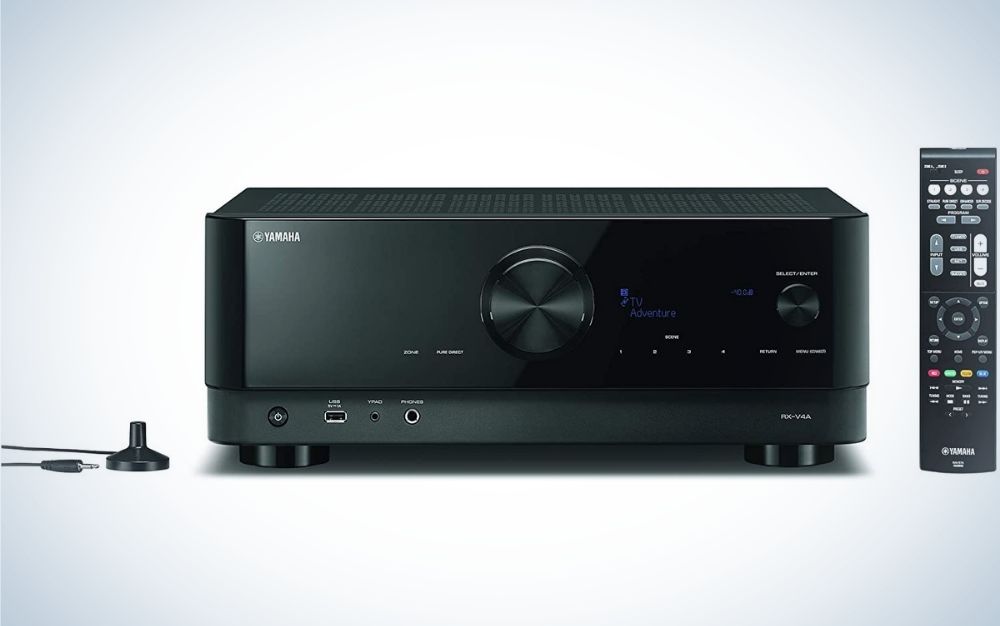 Solid features for the money, including future support of 8K. See It
Solid features for the money, including future support of 8K. See It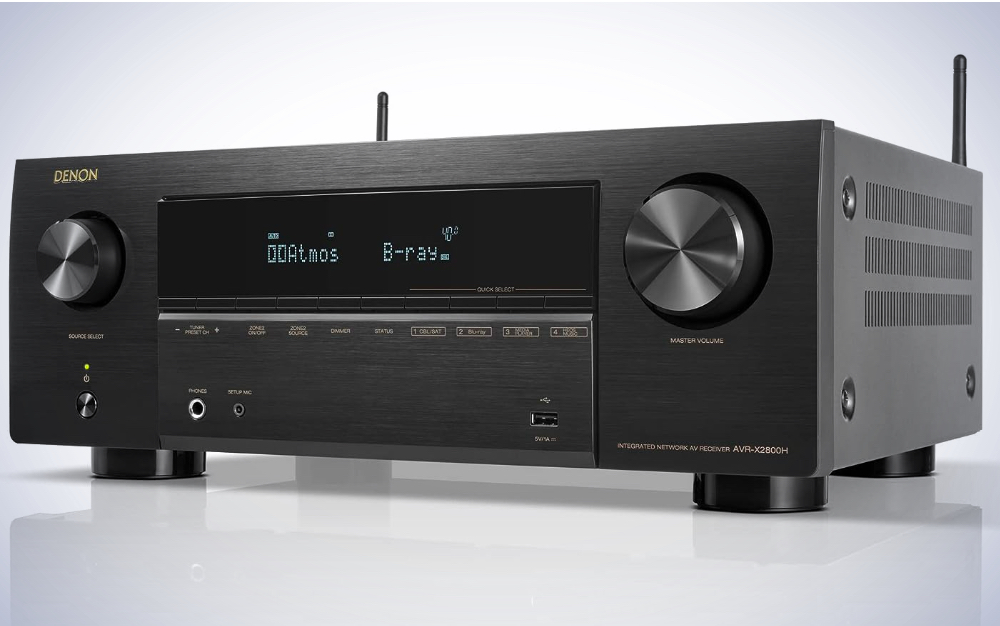 See It
See It 16-channels of processing See It
16-channels of processing See It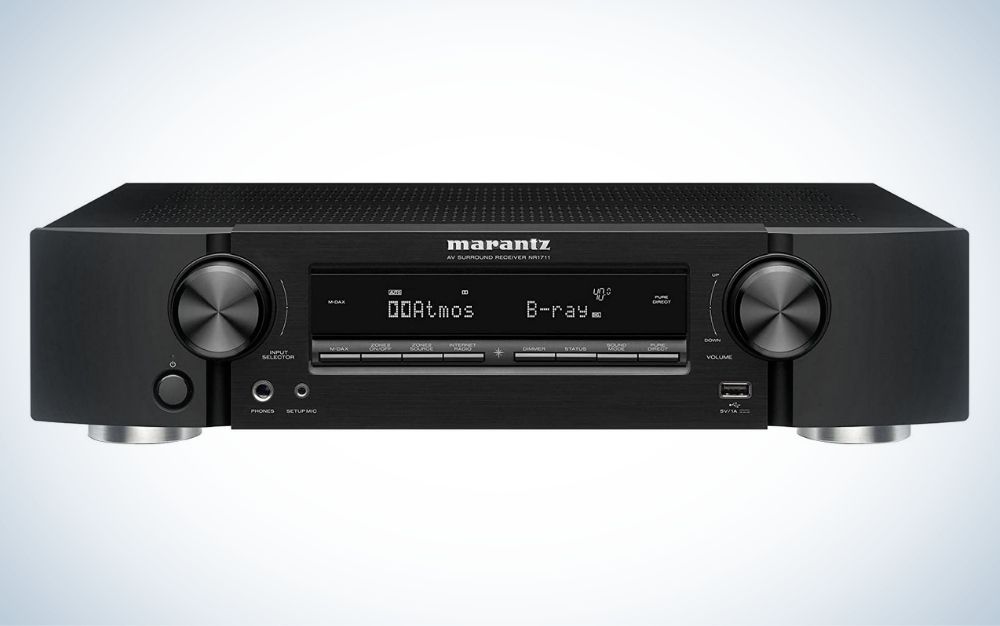 Marantz sound quality in a half-height unit that gamers will love. See It
Marantz sound quality in a half-height unit that gamers will love. See It Join the conversation with other Anthem fans on Facebook.
Join the conversation with other Anthem fans on Facebook. Keep up with everything Anthem on Twitter.
Keep up with everything Anthem on Twitter. View & download product photos, lifestyle images and logos on Flickr.
View & download product photos, lifestyle images and logos on Flickr. Watch our information and product videos on YouTube.
Watch our information and product videos on YouTube. Get the latest news and special announcements on our official Blog.
Get the latest news and special announcements on our official Blog.
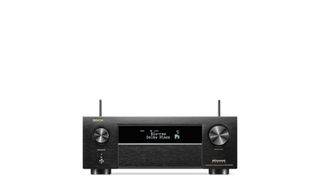 Best overall
Best overall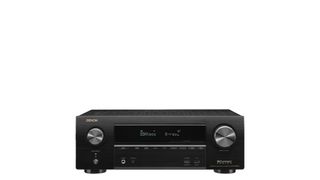 Best value
Best value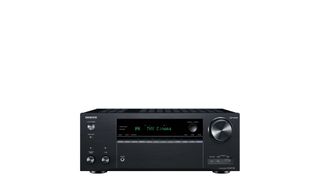 Best 4K/8K support
Best 4K/8K support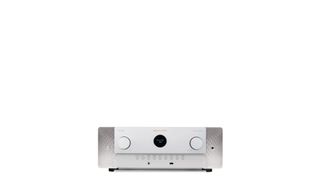 Best format support
Best format support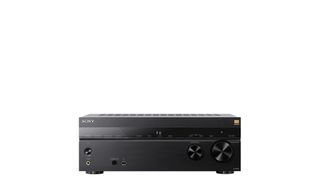 Best for spatial audio
Best for spatial audio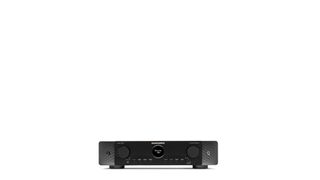 Best low profile
Best low profile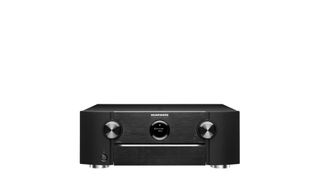 Best for audiophiles
Best for audiophiles Lee DunkleyAudio EditorHi, I’m Lee and I cover all things audio for Tom’s Guide, including maintaining buying guides on the best AV receivers, best audiophile headphones, best turntables, and best music streaming services (to name a few). I’ve been working in the consumer tech industry for more than 30 years and write about the finest audio products in the world. As an audio expert, I built my own home theater room to test AV setups including multi-channel AV receivers, speaker systems, and flatscreen TVs. As well as being fanatical about great sound with high-octane movies, I also love listening to music on components that get me closer to my favorite tracks and make a strong musical connection. I have been reviewing luxury Hi-Fi audio components since the mid-nineties, making me perfectly positioned to find the best-sounding AV receiver for all your home entertainment needs at the right budget.
Lee DunkleyAudio EditorHi, I’m Lee and I cover all things audio for Tom’s Guide, including maintaining buying guides on the best AV receivers, best audiophile headphones, best turntables, and best music streaming services (to name a few). I’ve been working in the consumer tech industry for more than 30 years and write about the finest audio products in the world. As an audio expert, I built my own home theater room to test AV setups including multi-channel AV receivers, speaker systems, and flatscreen TVs. As well as being fanatical about great sound with high-octane movies, I also love listening to music on components that get me closer to my favorite tracks and make a strong musical connection. I have been reviewing luxury Hi-Fi audio components since the mid-nineties, making me perfectly positioned to find the best-sounding AV receiver for all your home entertainment needs at the right budget.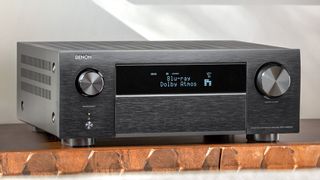

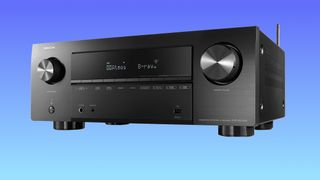

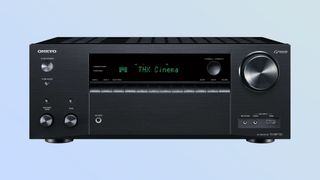
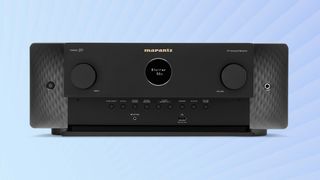
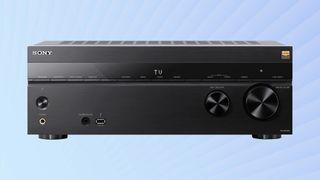
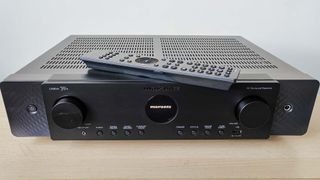
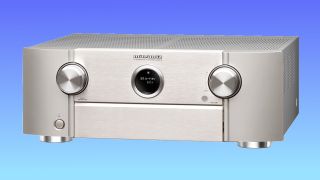
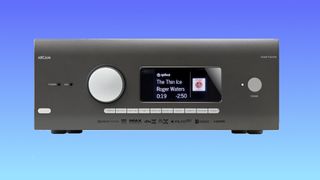

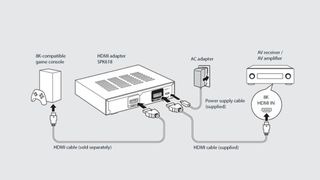
 Denon AVR-4800H
Denon AVR-4800H $2,499ViewSee all prices
$2,499ViewSee all prices Denon AVR-X2700H
Denon AVR-X2700H Onkyo TX-NR7100
Onkyo TX-NR7100 Marantz Cinema 50
Marantz Cinema 50 $898ViewSee all prices
$898ViewSee all prices Marantz Cinema 70S
Marantz Cinema 70S
